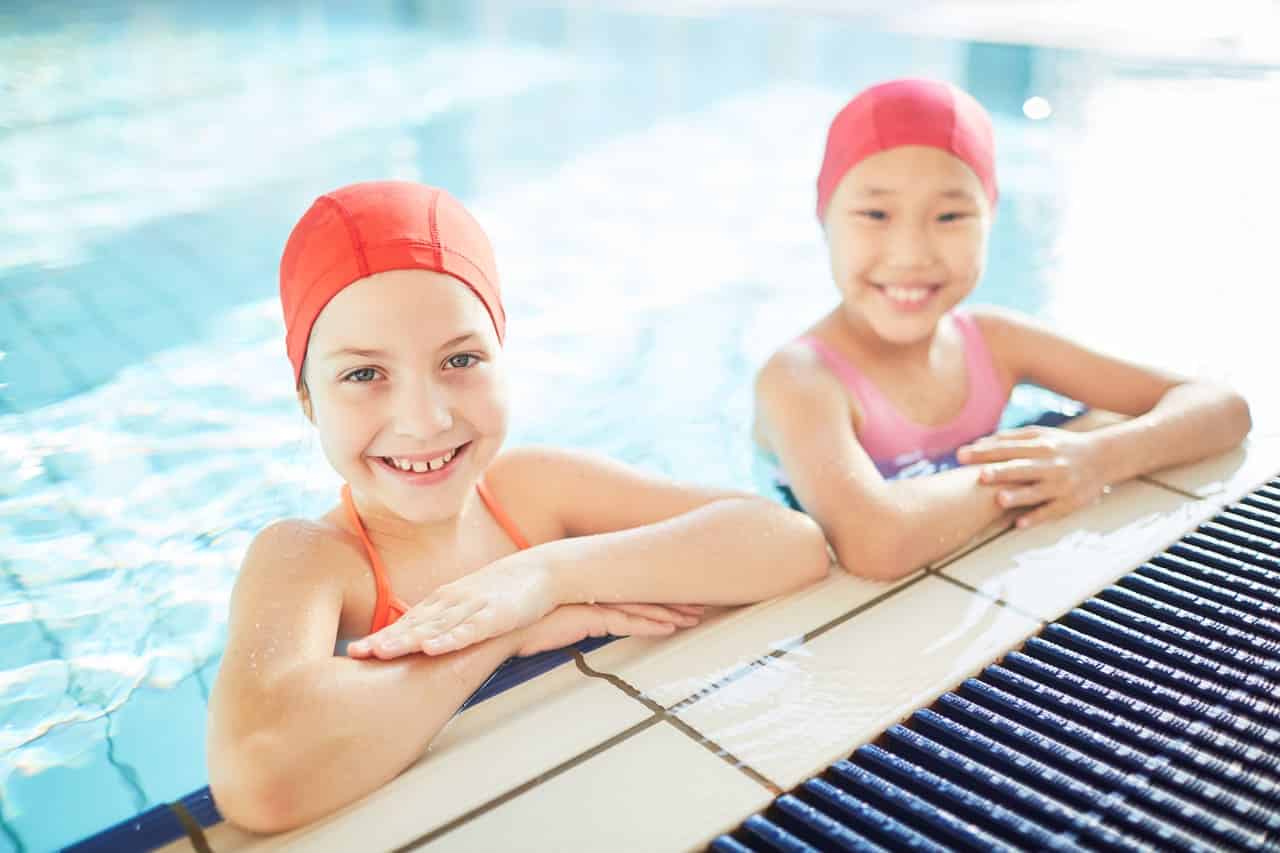As parents, we want to ensure that our children are protected from the harmful effects of the sun while they enjoy their time at the beach or pool. However, choosing the right UV-protective swimwear for kids can be a challenging task. With so many options available, it can be difficult to find the perfect balance between style, comfort, and sun protection.
The importance of sun protection cannot be overstated, as excessive sun exposure can lead to skin damage, sunburn, and even an increased risk of skin cancer later in life. A crucial element in protecting your child’s delicate skin is selecting the right UV-protective swimwear that offers both comfort and adequate sun protection.
In this blog post, we will guide you through the process of choosing the best UV-protective swimwear for your kids fun in the sun. We will discuss the key factors to consider when shopping for UV-protective swimwear, such as UPF ratings, fabric type, coverage, and fit. Additionally, we will provide tips on how to care for UV-protective swimwear to maintain its effectiveness and prolong its lifespan.
In This Article
Understanding UPF Ratings
What is UPF (Ultraviolet Protection Factor)? UPF (Ultraviolet Protection Factor) is a measurement used to indicate the effectiveness of a fabric in blocking ultraviolet (UV) radiation from reaching the skin. It represents the ratio of UV radiation that is absorbed by the fabric compared to the amount that passes through it. A higher UPF rating means better protection against harmful UV rays.
UPF ratings scale and how to interpret them The UPF rating system ranges from 15 to 50+, with each rating offering varying levels of protection:
- UPF 15-24: Good protection, blocking 93.3% to 95.9% of UV radiation
- UPF 25-39: Very good protection, blocking 96.0% to 97.4% of UV radiation
- UPF 40-50+: Excellent protection, blocking 97.5% or more of UV radiation
It’s essential to understand that a higher UPF rating provides superior protection against UV rays, reducing the risk of sunburn and skin damage.
Minimum recommended UPF rating for children’s swimwear For children’s swimwear, it is generally recommended to choose a minimum UPF rating of 30, which offers very good protection. However, opting for UPF 50+ swimwear is ideal as it provides the highest level of protection, blocking at least 97.5% of UV radiation. This is particularly important for children, whose skin is more sensitive and susceptible to sunburn and long-term damage from UV exposure.
Choosing the Right Fabric
A. Common materials used in UV-protective swimwear UV-protective swimwear is typically made from a blend of synthetic materials, including polyester, nylon, and elastane (also known as spandex or Lycra). These materials are chosen for their ability to maintain their shape, provide stretch and comfort, and offer effective UV protection. Some manufacturers also incorporate special treatments or coatings on the fabric to enhance its sun-blocking capabilities.
Pros and cons of different fabric types
Polyester:
- Pros: Durable, lightweight, quick-drying, and offers good UV protection.
- Cons: May be less breathable and comfortable compared to other fabrics.
Nylon:
- Pros: Lightweight, strong, and resistant to abrasion; provides excellent UV protection when tightly woven.
- Cons: May lose its shape over time and may not be as eco-friendly as other options.
Elastane (Spandex or Lycra):
- Pros: Provides excellent stretch and flexibility, ensuring a comfortable fit; often combined with other materials to improve UV protection.
- Cons: Can break down over time, especially when exposed to chlorine and saltwater; may require extra care during washing.
Tips for selecting a durable and comfortable fabric
- Look for a blend of materials that offer a balance of comfort, durability, and UV protection. A combination of polyester, nylon, and elastane is often ideal.
- Choose swimwear with a tight weave, as this provides better UV protection.
- Opt for high-quality, well-constructed swimwear that will last longer and maintain its shape and effectiveness.
- Check the label for any special care instructions to prolong the life of the swimwear and ensure it continues to offer adequate UV protection.
- Consider eco-friendly options made from recycled materials or sustainable fabrics, which have a lower environmental impact without compromising on UV protection.
Coverage and Design Considerations
Importance of adequate coverage for sun protection The more skin that is covered by UV-protective swimwear, the better the sun protection provided. Adequate coverage is essential in reducing the risk of sunburn and long-term skin damage, especially for children with sensitive skin. Choosing swimwear styles that cover larger areas of the body, such as long-sleeved rash guards and full-length swimsuits, can significantly increase the level of protection from harmful UV rays.
Popular styles of UV-protective swimwear for kids
- Rash guards: Long or short-sleeved shirts that offer excellent sun protection and can be worn over regular swimsuits or paired with swim shorts or leggings.
- Swim shirts: Similar to rash guards but often made from lighter materials, making them more comfortable for extended wear but potentially offering slightly less UV protection.
- Full-length swimsuits: One-piece swimsuits that cover most of the torso and may include long sleeves and/or full-length legs for maximum coverage.
- Swim shorts and leggings: Bottoms designed to be worn with a rash guard or swim shirt, providing additional coverage for the lower body.
- Swim caps and sun hats: Accessories that provide added protection for the head, face, and neck from the sun’s harmful rays.
Choosing a design that suits your child’s preferences and needs
- Consider your child’s activity level and the type of water activities they’ll be engaged in when selecting a style. For example, a long-sleeved rash guard might be more suitable for surfing, while a swim shirt could be more comfortable for a day at the beach.
- Take your child’s preferences into account, such as their favorite colors, patterns, or characters. Involving them in the selection process can make them more excited to wear their UV-protective swimwear.
- Keep in mind any specific skin sensitivities or allergies when selecting materials, and look for swimwear with flat seams to minimize irritation.
- Choose a design that offers a balance between sun protection and comfort, ensuring your child is both safe and happy while enjoying their time in the water.
Ensuring the Right Fit
Importance of proper fit for comfort and sun protection A proper fit is crucial for both comfort and sun protection in UV-protective swimwear. Swimwear that is too tight can cause discomfort, restrict movement, and potentially lead to skin irritation. On the other hand, swimwear that is too loose may not provide adequate coverage, resulting in reduced sun protection. Furthermore, ill-fitting swimwear can sag or bunch up, making it less effective at blocking UV rays.
How to measure your child for swimwear To ensure the right fit, take accurate measurements of your child before purchasing swimwear. Here are some guidelines for measuring:
- Chest: Measure around the fullest part of the chest, keeping the tape measure level and snug but not tight.
- Waist: Measure around the narrowest part of the waist, usually just above the belly button.
- Hips: Measure around the widest part of the hips, ensuring the tape measure remains level.
- Height: Measure your child’s height from the top of their head to the floor, without shoes.
Keep these measurements handy when shopping for swimwear, and refer to the manufacturer’s size chart to find the best fit for your child.
Tips for trying on swimwear and assessing the fit
- If possible, have your child try on the swimwear in person to ensure a proper fit. Make sure they wear appropriate undergarments when trying on swimwear in a store.
- Check for any areas that may be too tight or restrictive, such as the armholes, neckline, or waistband. The swimwear should allow for comfortable movement without feeling constricting.
- Look for any gaps or sagging in the fabric, which could indicate that the swimwear is too loose and may not provide adequate sun protection.
- Ensure that the swimwear covers the desired areas of the body, offering maximum protection from the sun.
- Pay attention to your child’s comfort and preferences, as they are more likely to wear their UV-protective swimwear if they feel comfortable and confident in it.
Caring for UV-Protective Swimwear
A. Proper washing and drying techniques To prolong the life of your child’s UV-protective swimwear and maintain its effectiveness, follow these washing and drying guidelines:
- Rinse the swimwear thoroughly in cold water immediately after use to remove chlorine, salt, sand, and sunscreen residue.
- Hand-wash the swimwear using a mild detergent, gently agitating the water to ensure the fabric is cleaned thoroughly. Avoid using bleach, as it can damage the fabric and reduce UV protection.
- Gently squeeze out excess water, being careful not to wring or twist the fabric, which can cause it to lose its shape.
- Dry the swimwear flat in the shade, away from direct sunlight, which can cause fading and reduce the effectiveness of the UV protection. Avoid using a clothes dryer, as the heat can damage the fabric.
Tips for maintaining the effectiveness of UV-protective swimwear
- Store the swimwear in a cool, dry place when not in use, away from direct sunlight.
- Avoid sitting on rough surfaces while wearing the swimwear, as this can cause abrasion and damage the fabric.
- Regularly inspect the swimwear for signs of wear and tear, such as thinning fabric, fading, or loose seams, which can reduce its UV protection capabilities.
Signs that it’s time to replace your child’s swimwear It’s important to replace your child’s UV-protective swimwear when it no longer provides adequate sun protection. Some indicators that it’s time for a replacement include:
- Fading or thinning fabric, which can reduce the UPF rating and effectiveness of the swimwear.
- Stretched or sagging material that no longer fits properly, resulting in decreased coverage and protection.
- Damaged or frayed seams, which can compromise the structural integrity of the swimwear and reduce its sun-blocking capabilities.
- If your child has outgrown the swimwear, it’s essential to purchase a properly fitting replacement to ensure continued sun protection.
Conclusion
A. Recap of key factors to consider when choosing UV-protective swimwear In summary, to choose the best UV-protective swimwear for your child, consider the following factors:
- UPF rating: Opt for a minimum rating of 30, with UPF 50+ being the ideal choice for maximum protection.
- Fabric: Look for a blend of materials, such as polyester, nylon, and elastane, that offer durability, comfort, and effective UV protection.
- Coverage and design: Choose swimwear styles that provide adequate coverage and suit your child’s preferences and needs.
- Proper fit: Ensure the swimwear fits comfortably and securely to maximize sun protection and minimize skin exposure.
- Care and maintenance: Follow appropriate washing and drying techniques to prolong the life of the swimwear and maintain its UV-blocking capabilities.
Encouragement for parents to prioritize sun protection for their children As parents, it’s essential to prioritize sun protection for your children to reduce the risk of sunburn and long-term skin damage caused by UV radiation. By investing in high-quality UV-protective swimwear and teaching your children about the importance of sun safety, you can help them enjoy their fun in the sun while keeping their skin healthy and protected.










![Home Renovation Guide [2025]](/app/uploads/2021/04/design-hacks-1-378x300.jpg)
